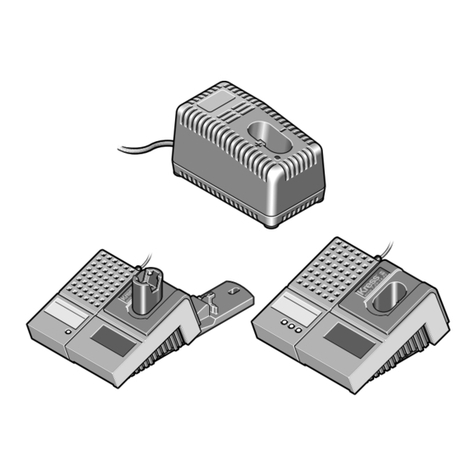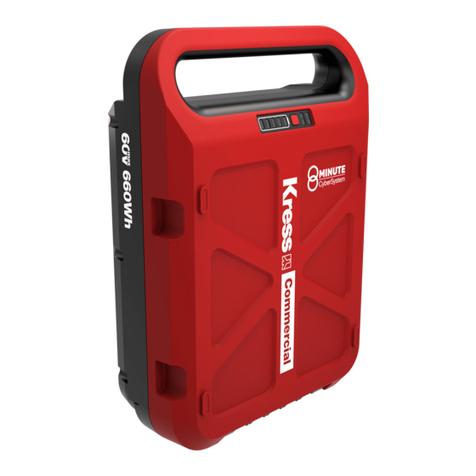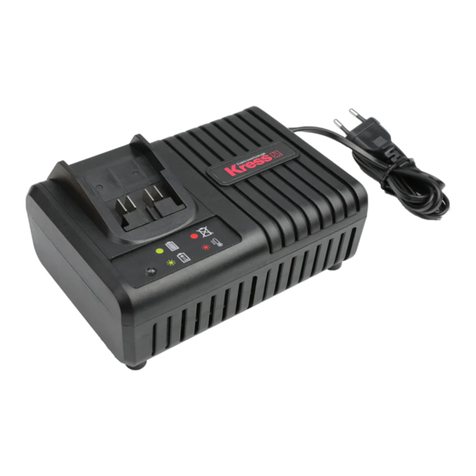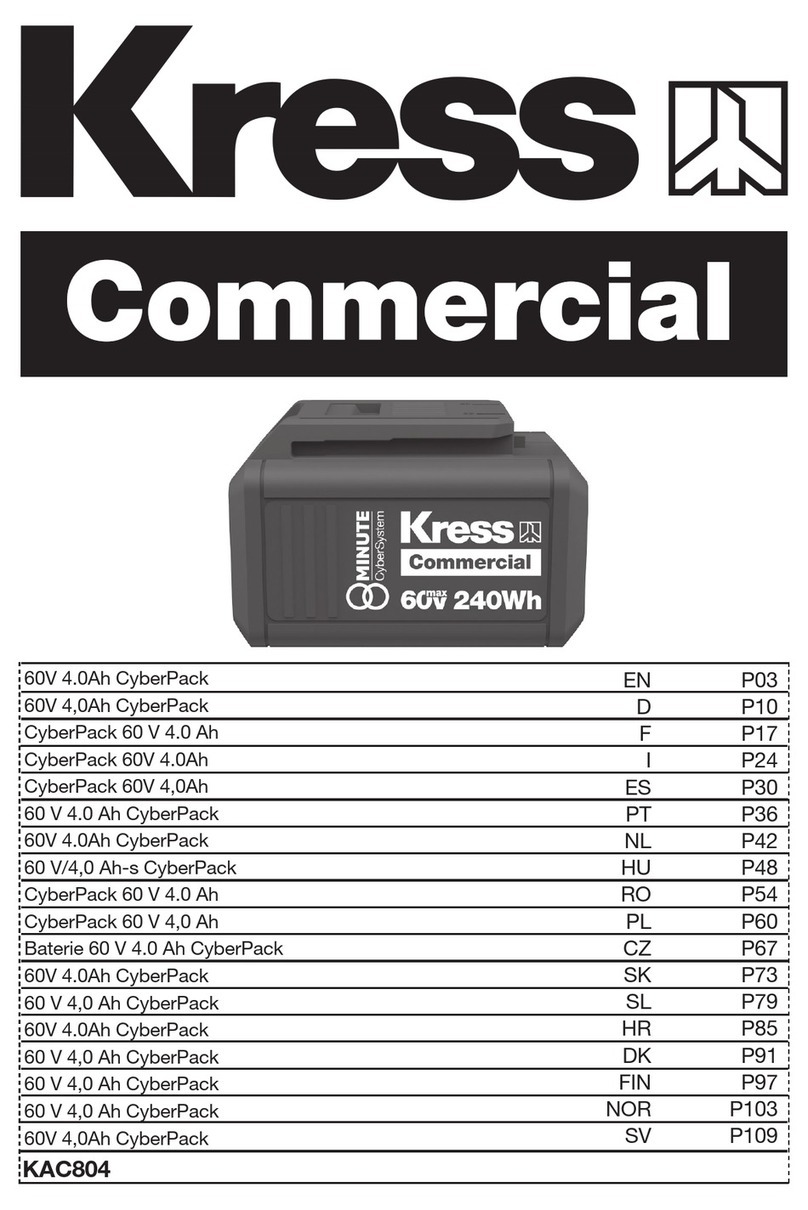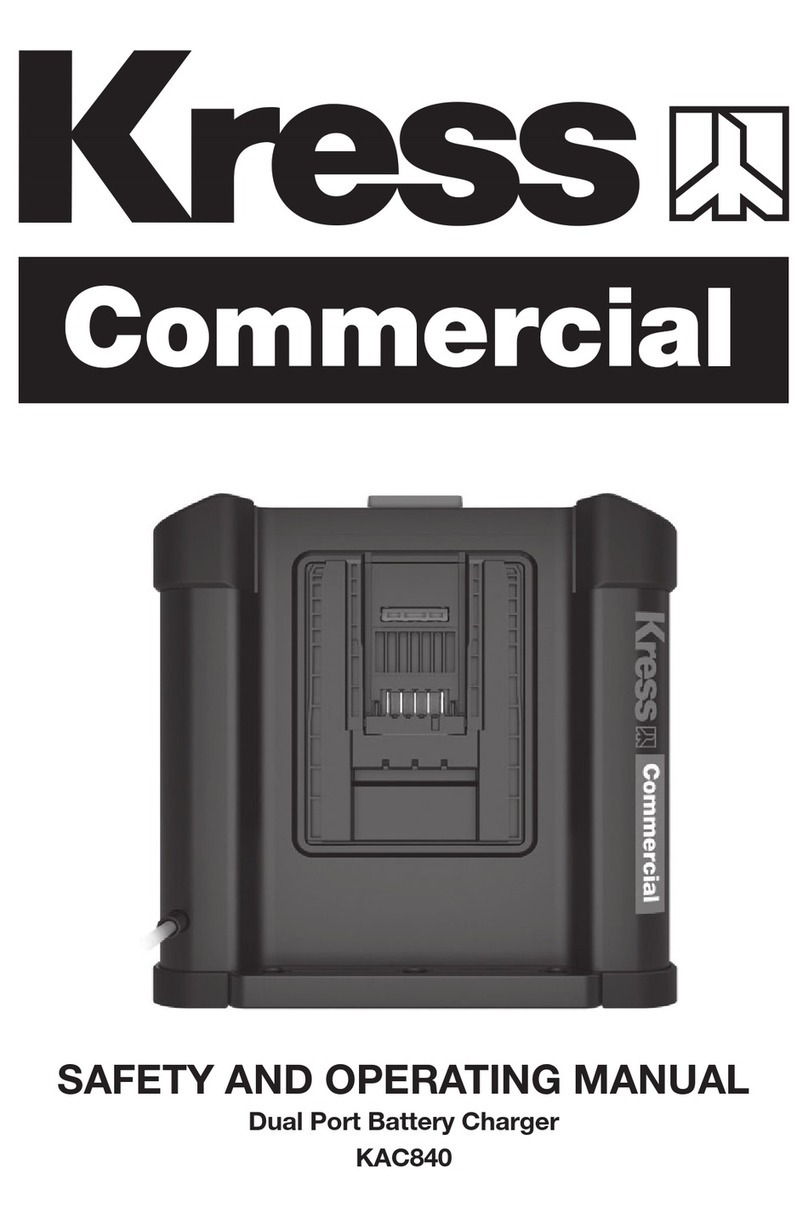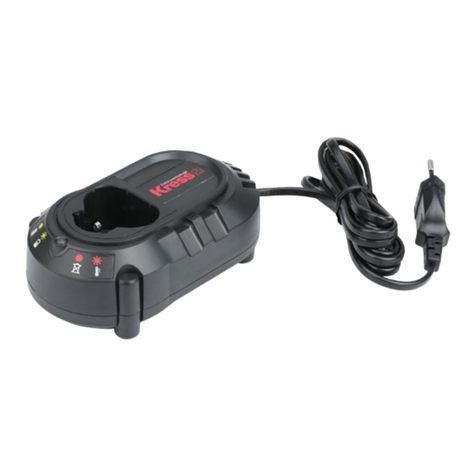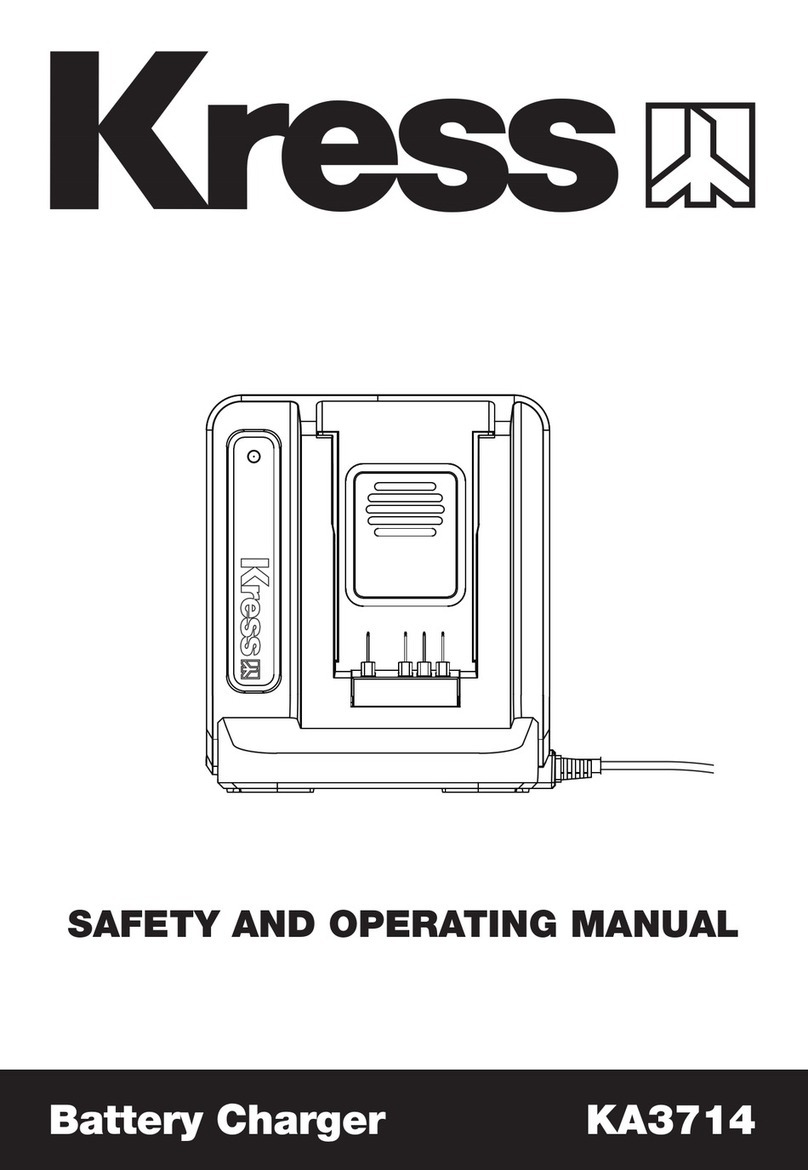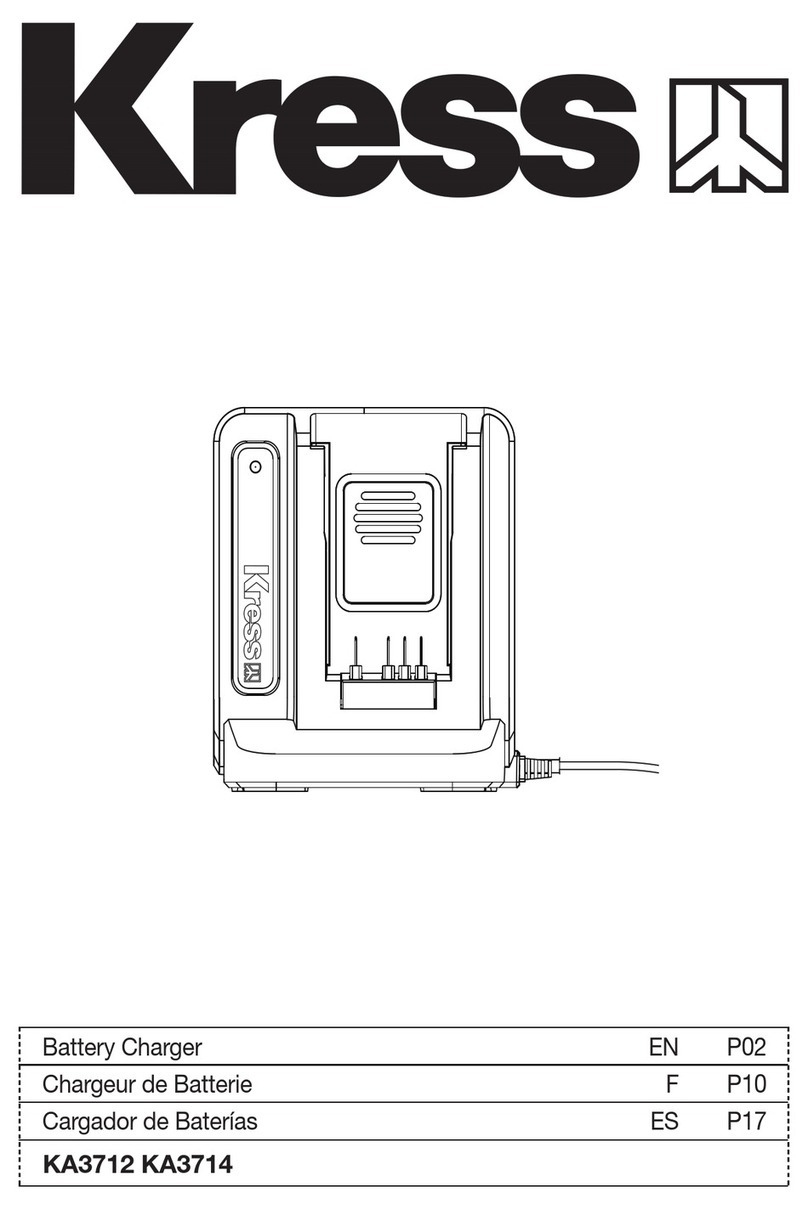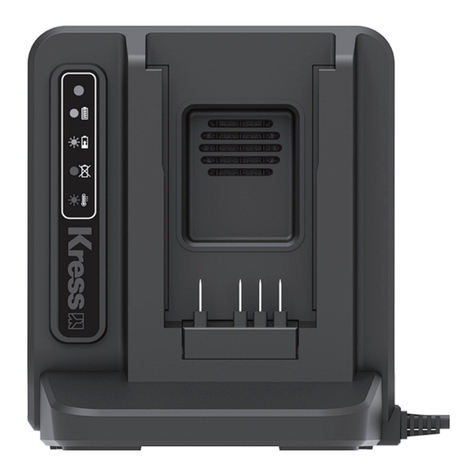
9
DE
2. Eine längere Lebensdauer und bessere Leistung
kann erreicht werden, wenn das Batteriepack bei
18º-24ºC Raumtemperatur aufgeladen wird. Laden
Sie das Batteriepack nicht bei einer Lufttemperatur
von weniger als 0ºC oder von mehr als 40ºC auf.
Dies ist wichtig, da dadurch schwerer Schaden am
Batteriepack vermieden werden kann.
3. Frieren Sie Ihr Auadegerät nicht ein und bringen
Sie es nicht in Kontakt mit Wasser oder anderen
Flüssigkeiten.
4. Wenn das Batteriepack nicht ausreichend Strom für
Fälle liefert, die vorher problemlos funktionierten,
laden Sie Ihre Batterie auf. Benutzen Sie sie unter
diesen Umständen nicht weiter. Sie können ein
teilweise verbrauchtes Batteriepack, ohne nachteilige
Auswirkungen auf das Batteriepack, jederzeit
verwenden.
5. Während des Ladevorgangs ist es normal, dass das
Batteriepack und das Ladegerät warm werden.
6. Wenn das Batteriepack nicht richtig aufgeladen wird:
a. Überprüfen Sie den Strom an der Steckdose,
indem Sie das Ladegerät an eine andere Steckdose
anschließen.
b. Schließen Sie das Ladegerät an und trennen Sie es von
der Steckdose, um zu prüfen ob es in Ordnung ist.
c. Überprüfen Sie, ob die Batterie defekt ist.
d. Schließen Sie das Ladegerät an einem Ort an, an dem
die Umgebungstemperatur etwa 18º - 24º C beträgt.
e. Wenn das Ladeproblem anhält, bringen Sie das
Gerät, das Batteriepack und das Ladegerät zu einem
befugten Service-Center.
f. Unter bestimmten Bedingungen, wenn das Ladegerät
an eine Steckdose angeschlossen ist, können die
Ladekontakte des Ladegeräts durch Fremdmaterial
abgetragen werden. Leitendes Fremdmaterial
wie metallische Teile müssen von den Öffnungen
des Ladegeräts ferngehalten werden. Trennen Sie
immer das Ladegerät von der Steckdose, wenn kein
Batteriepack im Ladegerät ist oder vor der Reinigung.
PROBLEMLÖSUNG
DER AKKU LÄSST SICH NICHT IN DAS LADEGERÄT
EINSETZEN
a) Prüfen Sie, ob das Ladegerät und das Batteriepack
füreinander geeignet sind.
b) Der Akku kann nur in einer Richtung in das Ladegerät
eingesetzt werden. Drehen Sie die Batterie herum, so
dass sie eingesetzt werden kann, die Kontrollleuchte
sollte grün aueuchten und blinken, wenn der Akku
geladen wird.
GRÜNDE FÜR UNTERSCHIEDLICHE LADEDAUER
Die Ladedauer hängt von mehreren Faktoren ab.
Unterschiedlich lange Ladevorgänge sind kein Hinweis auf
einen Defekt.
a) Ist das Akkupack nur teilentladen, kann es in weniger
als der vorgesehenen Nennzeit aufgeladen werden
b) Wenn das Akkupack und die Umgebungstemperatur
sehr kalt/heiß sind, kann das Wiederauaden
länger dauern. Bitte suchen Sie eine angemessene
Umgebung mit der korrekten Lufttemperatur, um den
Ladevorgang zu starten.
c) Falls der Akku sehr heiß ist, verhindert eine interne
Sicherheitsabschaltung die Auadung. Sie müssen den
Akku aus dem Ladegerät herausnehmen und abkühlen
lassen, ehe Sie ihn wieder auaden können.
WARTUNG
Ziehen Sie grundsätzlich den Netzstecker, bevor
Sie Einstell-, Reparatur- oder Wartungstätigkeiten
ausführen.
Ihr Werkzeug benötigt keine zusätzliche Schmierung oder
Wartung. Nutzen Sie niemals Wasser oder chemische
Reinigungsmittel zum Säubern des Ladegeräts. Wischen
Sie es mit einem trockenen Tuch. Bewaren Sie Ihr
Ladegerät stets trocken auf.
Falls das Netzkabel beschädigt sein sollte, muss es vom
Hersteller, einem seiner Service-Beauftragten oder einer
ähnlich qualizierten Person instandgesetzt werden, damit
es nicht zu Gefährdungen kommt.
UMWELTSCHUTZ
Elektroprodukte dürfen nicht mit dem normalen
Haushaltsmüll entsorgt werden, sondern sollten
nach Möglichkeit zu einer Recyclingstelle
gebracht werden. Ihre zuständigen Behörden oder
Ihr Fachhändler geben Ihnen hierzu gerne Auskunft.
KONFORMITÄTSERKLÄ-
RUNG
Wir,
Positec Germany GmbH
Postfach 32 02 16, 50796 Cologne, Germany
erklären hiermit, dass unser Produkt
Beschreibung Ladegerät
Typ KAC22
den Bestimmungen der folgenden Richtlinien entspricht:
2014/35/EU,
2014/30/EU,
2011/65/EU&(EU)2015/863
Werte nach
EN 60335-1,
EN 60335-2-29,
EN 62233,
EN 55014-1,
EN 55014-2,
EN IEC 61000-3-2,
EN 61000-3-3
2022/08/24
Allen Ding
Stellvertretender Chengenieur,
Prufung und Zertizierung
Positec Technology (China) Co., Ltd
18, Dongwang Road, Suzhou Industrial
Park, Jiangsu 215123, P. R. China

